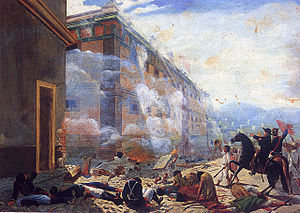Capture of Alhóndiga de Granaditas
| |||||||||||||||||||||||||||||||||||
Read other articles:
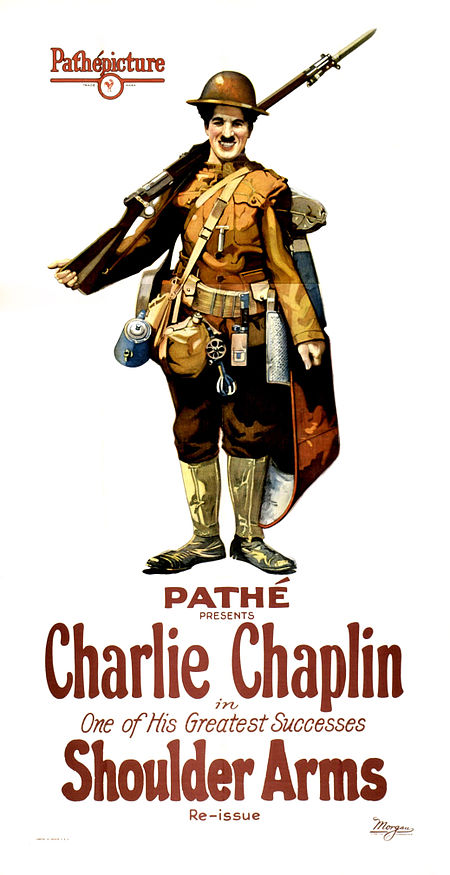
Untuk film Jerman, lihat Shoulder Arms (film 1939). Shoulder ArmsPoster teatrikal untuk Shoulder ArmsSutradaraCharlie ChaplinProduserCharlie ChaplinDitulis olehCharlie ChaplinPemeranEdna PurvianceSydney ChaplinSinematograferRoland TotherohPenyuntingCharles ChaplinDistributorFirst National PicturesTanggal rilis20 Oktober 1918Durasi36 menitNegaraASBahasaAntarjudul Inggris Shoulder Arms adalah film kedua Charlie Chaplin untuk First National Pictures. Dirilis pada 1918, film tersebut adalah sebuah f…

Stasiun Kasugihan Tampak dekat bangunan utama Stasiun KasugihanLokasiKesugihan, Kesugihan, Cilacap, Jawa Tengah 53274IndonesiaKoordinat7°37′20″S 109°7′13″E / 7.62222°S 109.12028°E / -7.62222; 109.12028Koordinat: 7°37′20″S 109°7′13″E / 7.62222°S 109.12028°E / -7.62222; 109.12028Ketinggian+9 mOperator Kereta Api IndonesiaDaerah Operasi V Purwokerto Letak km 388+350 lintas Bogor–Bandung–Banjar–Kutoarjo–Yogyakarta km 1+9…

この項目には、一部のコンピュータや閲覧ソフトで表示できない文字が含まれています(詳細)。 数字の大字(だいじ)は、漢数字の一種。通常用いる単純な字形の漢数字(小字)の代わりに同じ音の別の漢字を用いるものである。 概要 壱万円日本銀行券(「壱」が大字) 弐千円日本銀行券(「弐」が大字) 漢数字には「一」「二」「三」と続く小字と、「壱」「弐」…

Questa voce o sezione sull'argomento centri abitati della Lombardia non cita le fonti necessarie o quelle presenti sono insufficienti. Puoi migliorare questa voce aggiungendo citazioni da fonti attendibili secondo le linee guida sull'uso delle fonti. Segui i suggerimenti del progetto di riferimento. Montalto Pavesecomune Montalto Pavese – VedutaVeduta LocalizzazioneStato Italia Regione Lombardia Provincia Pavia AmministrazioneSindacoAngelo Villani (lista civica) dal&#…
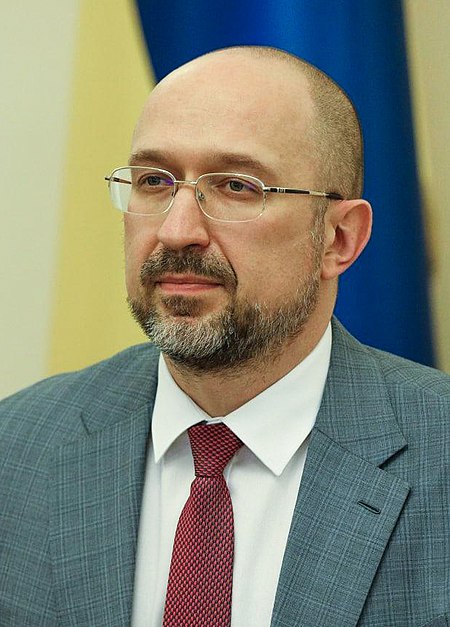
烏克蘭總理Прем'єр-міністр України烏克蘭國徽現任杰尼斯·什米加尔自2020年3月4日任命者烏克蘭總統任期總統任命首任維托爾德·福金设立1991年11月后继职位無网站www.kmu.gov.ua/control/en/(英文) 乌克兰 乌克兰政府与政治系列条目 宪法 政府 总统 弗拉基米尔·泽连斯基 總統辦公室 国家安全与国防事务委员会 总统代表(英语:Representatives of the President of Ukraine) 总理…
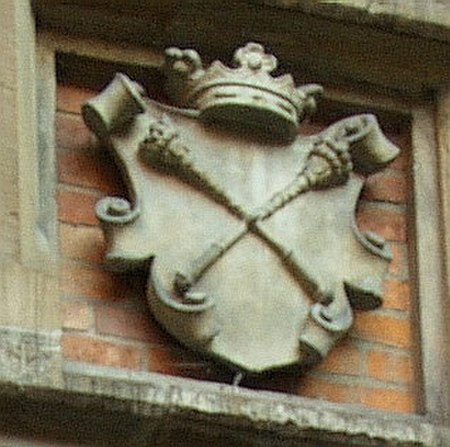
Universitas JagiellońskiUniwersytet Jagiellońskibahasa Latin: Universitas Jagellonica CracoviensisMotoPlus ratio quam vis (Biarkanlah masalah terselesaikan sendiri)JenisNegeriDidirikan1364RektorProfesor Karol MusiołJumlah mahasiswa52,445 (2008)Sarjana12,249Magister38,087Doktor2,109AlamatCollegium Novum ul. Gołębia 24 31-007 Kraków Poland, Kraków, PolandiaKampusPerkotaanAfiliasiEUA, Coimbra Group, Europaeum, NAFSA, Utrecht Network, EAIE, IRUNSitus webhttp://www.uj.edu.pl/ Untuk beberap…

This photoillustration from the front page of the June 6, 1904 issue of the St. Louis Republic newspaper illustrates the burning of the Norris Amusement Company arena during the St. Louis bullfight riot contemporary to the 1904 World's Fair. On June 5, 1904, thousands of people rioted in St. Louis, Missouri just north of the 1904 World's Fair after a bullfight was canceled by court order. The St. Louis bullfight riot resulted in a handful of injuries and the complete destruction (by fire) of the…

Paul KantnerPaul Kantner, 1975Informasi latar belakangNama lahirPaul Lorin KantnerLahir(1941-03-17)17 Maret 1941San Francisco, CaliforniaMeninggal28 Januari 2016(2016-01-28) (umur 74)San Francisco, CaliforniaGenrePsychedelic rock, folk rock, acid rockInstrumenVokal, gitar, harmonika, banjoTahun aktif1964–2016LabelRCA, Grunt, AristaArtis terkaitJefferson Airplane, Jefferson Starship, KBC Band Paul Lorin Kantner[1] (17 Maret 1941 – 28 Januari 2016) adalah seorang mus…

English musician (born 1961) Boy GeorgeBoy George in 2016BornGeorge Alan O'Dowd (1961-06-14) 14 June 1961 (age 62)Barnehurst, Kent, EnglandOther namesGeorge, Angela Dust (Jesus Loves You)[1]OccupationsSingersongwriterdisc jockeymixed media artistactorYears active1979 (1979)–presentMusical careerGenres Pop new wave soul soft rock disco reggae Instrument(s) Vocals turntables DiscographyBoy George discographyLabels EMI Virgin Epic Sire More Protein Plan A Records …

العلاقات الإيطالية الليتوانية إيطاليا ليتوانيا إيطاليا ليتوانيا تعديل مصدري - تعديل العلاقات الإيطالية الليتوانية هي العلاقات الثنائية التي تجمع بين إيطاليا وليتوانيا.[1][2][3][4][5] مقارنة بين البلدين هذه مقارنة عامة ومرجعية للدولتين: وج�…

City in Nevada, United States City in NevadaSparksCity FlagNickname(s): The Rail City,[1] City of PromiseMotto: It's Happening Here!Location in Washoe CountyCoordinates: 39°33′16″N 119°44′8″W / 39.55444°N 119.73556°W / 39.55444; -119.73556Country United StatesState NevadaCountyWashoeFounded1904; 120 years ago (1904)IncorporatedMarch 15, 1905; 119 years ago (1905-03-15)Named forJohn SparksGovernmen…
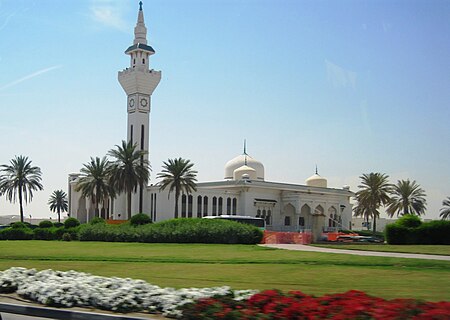
Islam by countryWorld percentage of Muslims by country Africa Algeria Angola Benin Botswana Burkina Faso Burundi Cameroon Cape Verde Central African Republic Chad Comoros Democratic Republic of the Congo Republic of the Congo Djibouti Egypt Equatorial Guinea Eritrea Eswatini Ethiopia Gabon Gambia Ghana Guinea Guinea-Bissau Ivory Coast Kenya Lesotho Liberia Libya Madagascar Malawi Mali Mauritania Mauritius Mayotte Morocco Western Sahara Mozambique Namibia Niger Nigeria Réunion Rwanda São Tomé …

Sawamish redirects here. For the county formerly named Sawamish County, see Mason County, Washington. Ethnic group SahewamishRegions with significant populationsUnited States (Washington)LanguagesEnglish, LushootseedRelated ethnic groupsother Salishan Twana peoples The Sahewamish are a Northwest Native American tribe of Lushootseed-speaking Coast Salish people. They were fisherman and hunter-gatherers, sedentary, and lived in the southwestern inlets of Puget Sound from Shelton, Washington, to th…

Climate Köppen climate types of Florida, using 1991–2020 climate normals. The climate of the north and central parts of the U.S. state of Florida is humid subtropical. South Florida has a tropical climate.[1] There is a defined rainy season from May through October when air mass thundershowers that build in the heat of the day drop heavy but brief summer rainfall. In October, the dry season sets in across much of Florida (starting early in the month in northern Florida and near the en…

2008 United States House of Representatives election in Wyoming's at-large district ← 2006 November 4, 2008 2010 → Nominee Cynthia Lummis Gary Trauner Party Republican Democratic Popular vote 131,244 106,758 Percentage 52.70% 42.87% County resultsLummis: 50–60% 60–70% 70–80%Trauner: 40–50% 50–60% U.S. Rep…

أربعاء الساحل أربعاء الساحل[1](بالفرنسية: Arbaa Sahel)[1] تقسيم إداري البلد المغرب[2] الجهة الإقتصادية سوس ماسة درعة المسؤولون الإقليم إقليم تيزنيت خصائص جغرافية إحداثيات 29°35′58″N 9°52′37″W / 29.599344°N 9.87699°W / 29.599344; -9.87699 المساحة ؟؟؟ كم² كم² السكا…

Questa voce sull'argomento pugili filippini è solo un abbozzo. Contribuisci a migliorarla secondo le convenzioni di Wikipedia. José VillanuevaNazionalità Filippine Pugilato Palmarès Competizione Ori Argenti Bronzi Giochi olimpici 0 0 1 Vedi maggiori dettagli Modifica dati su Wikidata · Manuale José Luis Villanueva (Binondo, 19 marzo 1913 – Quezon City, 11 novembre 1983) è stato un pugile filippino. Anche il figlio Anthony Villanueva è stato un pugile, vicecampione …

Château seriesTwo Château series cars on the rear of the Chaleur at Gaspé in 2008In service1954–presentManufacturerBuddConstructed1954Number built29Number in service29Capacity 8 duplex roomettes 3 sections 3 bedrooms 1 drawing room Operators Canadian Pacific (1954–1978) Via Rail (1978–present) SpecificationsCar body constructionStainless steelCar length85 feet (26 m)Width10 feet 3⁄8 inch (3.058 m)Height13 feet 6+3⁄4 inches (4.134 m)Weight13…

Type of electric locomotive This article is about the locomotive style. For the railway safety device, see Crocodile (train protection system). For other uses, see Crocodile (disambiguation). This article needs additional citations for verification. Please help improve this article by adding citations to reliable sources. Unsourced material may be challenged and removed.Find sources: Crocodile locomotive – news · newspapers · books · scholar · JSTOR …

Global nonprofit consortium This article is about the OASIS organization. For other uses, see Oasis (disambiguation). This article has multiple issues. Please help improve it or discuss these issues on the talk page. (Learn how and when to remove these template messages) This article contains content that is written like an advertisement. Please help improve it by removing promotional content and inappropriate external links, and by adding encyclopedic content written from a neutral point of vie…
